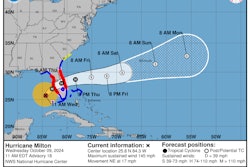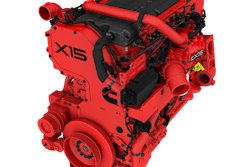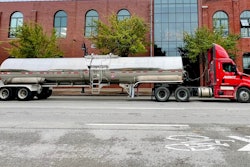The U.S. Department of Transportation’s (DOT) Pipeline and Hazardous Materials Safety Administration (PHMSA) Monday announced a new proposed rule the agency said will provide close to $100 million in annual cost savings for businesses and consumers.
The proposed rule updates and modernizes regulations to accommodate the latest technologies, business practices, and understandings of hazardous materials, including updates in packaging practices for hazmat transportation. Further, PHMSA said it reduces burdens for U.S. truck drivers by simplifying hazard communication requirements for fuels including gasoline that are transported in tanker trucks; encourages innovation and safety improvements to hazardous materials rail cars by reducing review times for tank car design improvements and addressing National Transportation Safety Board recommendations regarding improved design standards for rail tank cars; and modernizes standards for essential agricultural equipment by codifying manufacturing standards for newly built fertilizer tanks and permitting the use of video and fiber optics technologies when inspecting and calibrating cargo tanks in both agricultural and non-agricultural operations.
“Hazardous materials are a significant share of the essential goods routinely shipped in the United States, and the Biden-Harris Administration is working to make it more affordable and straightforward to safely move these materials through our supply chains,” said U.S. Secretary of Transportation Pete Buttigieg. “The proposal we’re announcing today streamlines requirements while maintaining safety measures, helping to reduce costs for businesses and consumers and make it easier for drivers to do their job.”
Among the changes and clarifications the proposal seeks are the revision of the registration requirements to allow for electronic submission procedures; specify that a cargo tank may display the UN ID number of the petroleum distillate fuel with the lowest flash point transported in different trips on the previous or current business day, except for gasoline and alcohol fuel blends with more than 10% ethanol; require bonding and grounding when preparing to transfer or transferring a combustible liquid, or a flammable liquid reclassified as a combustible liquid, from a cargo tank motor vehicle, in addition to the current requirements for flammable liquids; allow for the use of video cameras or video optics equipment for any inspection or test; include “bulges” in the list of conditions that may render a cargo tank unsafe for hazardous materials service; and add inspection and maintenance requirements for external ring stiffeners installed on a cargo tank motor vehicle constructed of metal other than mild steel or high-strength low-alloy steel, and clarify inspection and verification requirements for welded repairs.
PHMSA Deputy Administrator Tristan Brown added the proposal too focuses on ways to reduce regulatory burdens for truck drivers and increases the overall efficiency of America’s critical energy transportation supply chains.
The proposed rule has been submitted to the Office of the Federal Register for publication and can be viewed on PHMSA’s website at www.phmsa.dot.gov. PHMSA will accept comments on the proposed rule up to 90 days after it publishes in the Federal Register.














